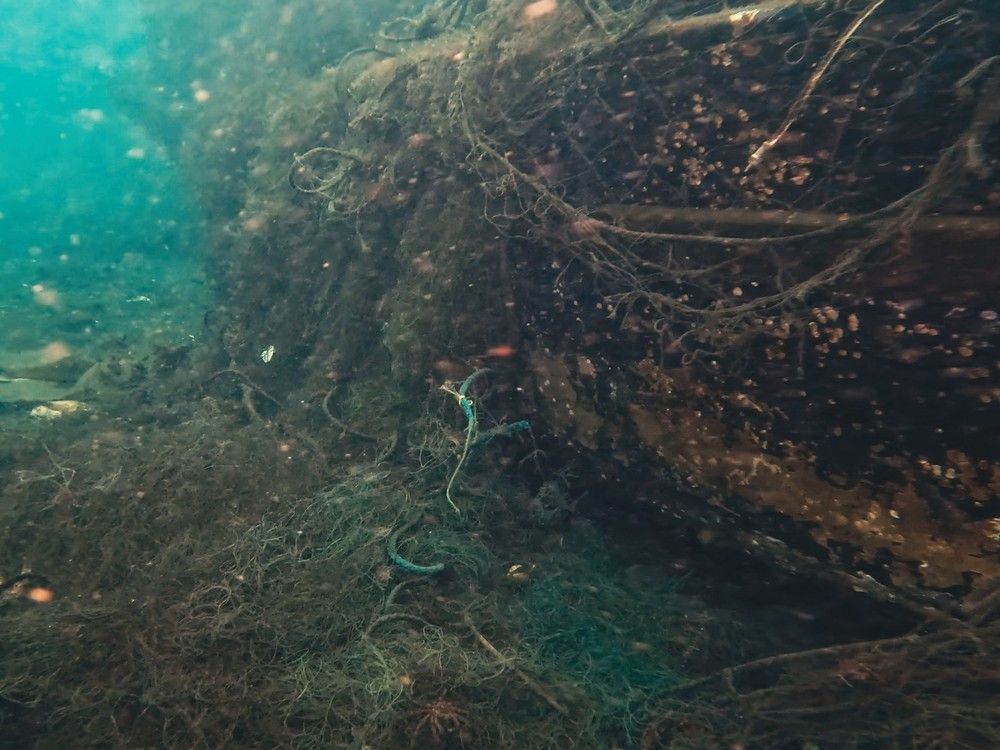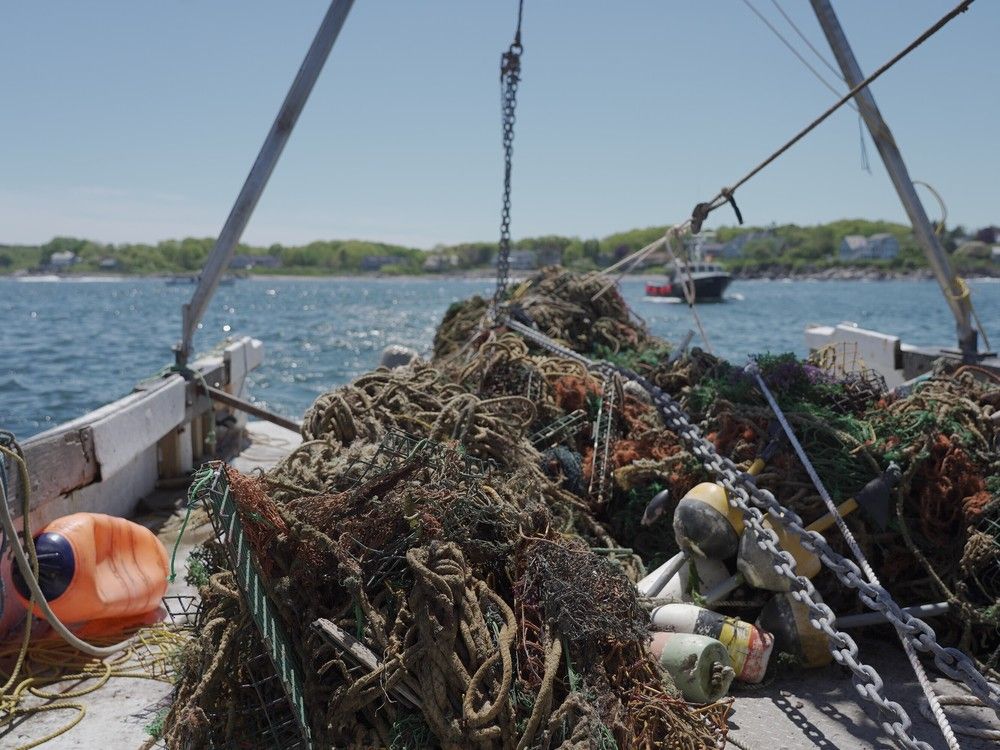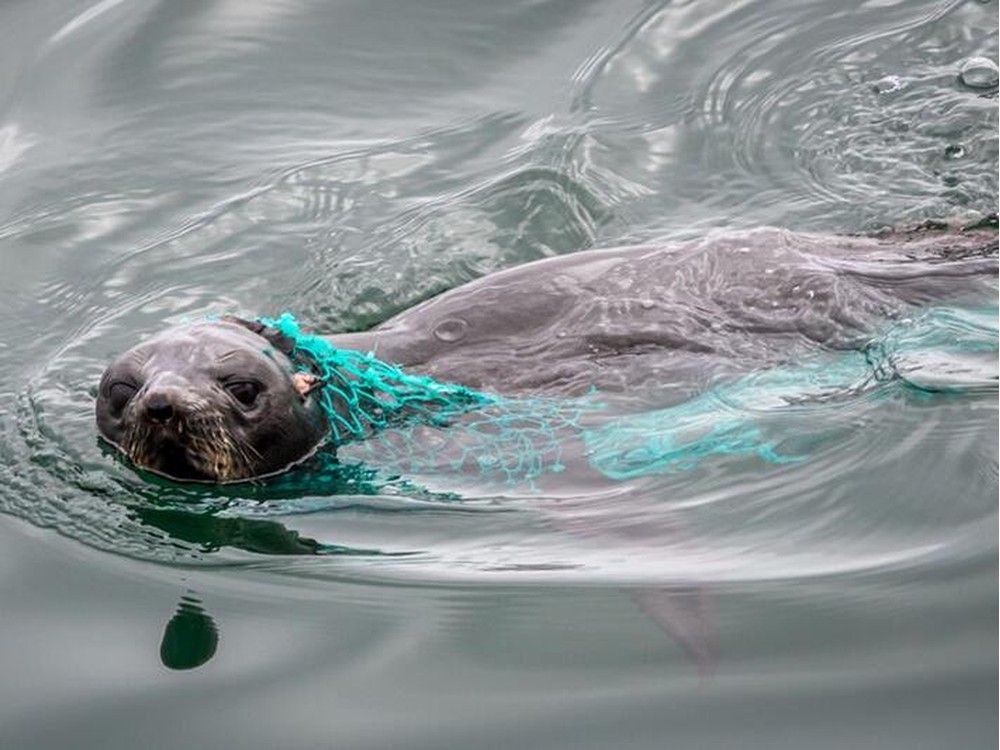
Commercial diver and part-time conservationist Bourton Scott has made a passion project out of searching out and cleaning up the unseen threat posed by “ghost gear,” the commercial nets and traps lost or abandoned off B.C.’s coast over the decades.
Lost overboard in bad weather, caught up on reefs and rocks or with the nets of other fishermen during frantic openings for fishing, Scott said the equipment doesn’t disappear, but keeps wreaking havoc by continuing to trap fish, seals, birds and sometimes even whales.
However it’s lost, though, such ghost gear in open waters pose a bigger threat to marine ecosystems than the single-use plastic straws, cups and bags that show up in urban shoreline cleanup efforts, according to conservation groups and the Fisheries Department.
And the group Scott co-founded, the Emerald Sea Protection Society, is among those trying to bring awareness and public support for cleaning up the problem.
Gillnets, made from clear monofilament fishing line with openings just wide enough to catch target fish behind their gills, “are probably the most harmful,” he added.
“They’re the hardest to see in the water, they’re often suspended in the water column, which makes them a much more dangerous hazard for those animals living in those areas,” said Scott, who lives in Ladysmith. “Under every gillnet that I’ve found, there’s always a bone pile, so evidence of its ‘ghost fishing’ for however it’s been in the water.”

During a cleanup of ghost gear at Alert Bay off of Northern Vancouver Island last fall, Scott said he found one gillnet with 15 live crabs caught up in its strands along with the skull of a sea otter and the skeletons of several sea birds, “and I think we removed something like 15 from that area.”
Scott’s Emerald Sea crew embarked on that cleanup with the support of the Namgis Nation and backing from the NGO Ocean Conservancy’s global ghost gear initiative cleanup effort.
“Nobody wants to lose their gear,” said Joel Baziuk, associate director of the Ocean Conservancy’s ghost-gear initiative.
However, it’s often too dangerous to recover gear in bad weather or tough currents, so “this is an unfortunate side-effect of that type of thing,” Baziuk said.
Globally, Baziuk’s conservation group points to studies that estimate ghost gear makes up 70 to 90 per cent of floating plastic in the gyres of garbage that collect on the open ocean.

One study reconned that the so-called Great Pacific Garbage Patch, the accumulation of marine debris floating around the Pacific between California and Hawaii, is made up of ghost gear.
Canada is one of the countries taking the problem seriously in its waters with an active “ghost gear action plan” that has been in place since 2019, which makes it “one of the top two or three in the world leading on this issue,” Baziuk added.
The Fisheries Department refused to make anyone available for an interview Wednesday citing the transition period following the last federal election. On its website, however, the DFO said it spent $58 million on 143 projects to clean up ghost gear between 2020 and 2024.
DFO regulations require commercial fishermen to report lost gear. Between 2020 and 2024, the DFO received 288 lost-gear reports on the West Coast, about 1.43 per cent of reports on all of Canada’s coasts.
The objective of the DFO’s ghost gear program is to develop a “prevention focused strategy” to meet government’s commitment to achieve “zero plastic waste by 2027,” according to the department’s website.
However, it’s difficult to tell how much of the problem is being fixed because “it is impossible to know how much ghost gear is in the ocean,” said researcher and educator Jackie Hildering, co-founder of the Marine Education and Research Society.
Hildering, in an email response to Postmedia News questions, said researchers have observed that half of humpback whales off of B.C.’s coast have scars showing they’ve been caught in some kind of gear, though she added that researchers don’t know how many entanglements are with ghost gear or shellfish traps being actively fished.
Scott noted that trying to survey the extent of the lost-gear problem is a mammoth task on B.C.’s 20,000-kilometre coastline.